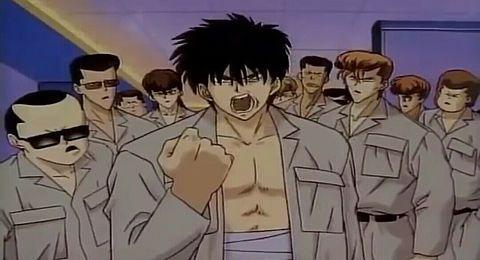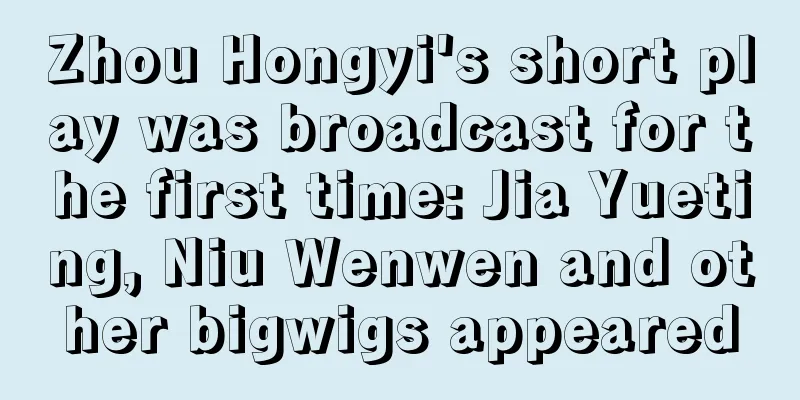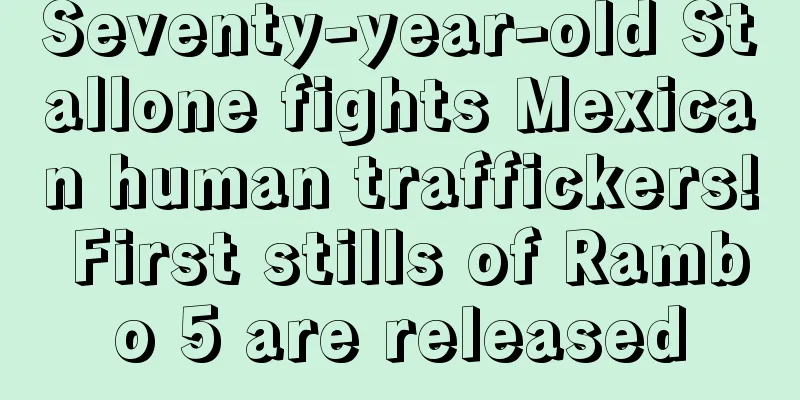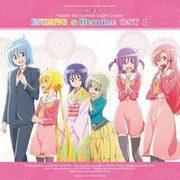"BADBOYS" review: A masterpiece anime depicting the roughness of youth and the depth of friendship

BADBOYS - Reviews and Recommendations■ Public MediaOVA ■ Original Mediacomics ■ Release dateSeptember 25, 1993 ■Frequencies46 min ■ Number of EpisodesEpisode 5 ■Original Story・Original story by Hiroshi Tanaka (serialized in Shonen Gahosha's Young King magazine) ■ DirectorOsamu Sekita ■ Production・Production cooperation: JCSTAFF ■Works©Hiroshi Tanaka/Shonen Gahosha, Toei Video ■ StoryHiroshima in the 1990s, where many motorcycle gangs are fighting for supremacy. Kiriki Tsukasa, who grew up as the son of a wealthy family, finds his way as a man in a motorcycle gang and runs away from home to become a delinquent. There, Tsukasa meets three gang members, Eiji, Yoji, and Toshio, but by chance he gets caught up in a conflict between the Hiroshima Knights and Gokurakuchou gangs. Tsukasa then ends up going one-on-one with Sugimoto Kazuhiro, the leader of the Knights. ■ExplanationThe land of Hiroshima is constantly shaken by the ambitions of the many teams trying to take over the world, including Ikuto, said to be the strongest in Hiroshima, Hiroshima Knights, who are in the top three, and Gokurakuchou VIII. In the midst of these fierce battles, Tsukasa grows, friendships are forged, love is nurtured, and tears are hard to hold back... This is a youth graffiti story that is different from the raging biker gangs... That is "BAD BOYS"! ■Cast・Tsukasa Kiriki/Mitsuaki Madono・Kumi Yumoto/Megumi Hayashibara・Yoji Kawanaka/Kenyu Horiuchi・Tosao Nakamura/Nobuyuki Furuta・Age Iwami/Nobuo Tobita・Hirokazu Sugimoto/Shigeru Chiba・Toshimasa Harabe/Tomoyuki Morikawa・Erika Sato/Masako Katsuo・Hidenno Hidenori/Tetsuaki Genda・Makoto/Yuka Koyama・Nao James/Masami Kikuchi・Member A/Hiroshi Tanaka・Uesu/Osamu Hiyama・Funaki/Kazunari Miyazaki・Old Lady/Naoko Ishii・Mama/Yayoi Jinguji・Woman A/Mizue Otsuka・Yankee A/Ken Hiyama・Middle-aged man/Yasuhiko Kawazu ■ Main staff Produced by Shonengahosha, Tanaka Productions, Toei Video Planning by Toda Rikichirō Original story by Tanaka Hiroshi (serialised in Shonengahosha's Young King magazine) ■ Main Characters・Tsukasa Kiriki: Formerly a rich kid from a wealthy family. After he ran away from home, his parents disappeared and he was left alone. His fighting skills are on a par with Danno's - "When he loses his temper, he's the strongest in Hiroshima" - and his friendliness has made him a favorite of many people, who flock to Gokurakuchou. ■ Theme songs and music・OP ■Review"BADBOYS" was released as an OVA in 1993 and is based on a manga serialized in Shonen Gahosha's "Young King" by Hiroshi Tanaka. The story is set in Hiroshima in the 1990s and depicts the struggles of motorcycle gangs and the youth of today, and continues to be loved by many fans. The protagonist, Tsukasa Kiriki, grew up as the son of a wealthy family, but he finds his way as a man in a biker gang and runs away from home. He meets Eiji, Yoji, and Toshio, and the story depicts how he gets caught up in the conflict between the Hiroshima Knights and Gokurakuchou. The story, which intertwines Tsukasa's growth, friendship, love, and tears, is not just a story about biker gangs, but is depicted as a coming-of-age story. The appeal of this work lies above all in the depth of the characters and the realism of the human relationships. Tsukasa's fighting strength - "When he loses his temper, he's the strongest in Hiroshima" - and his friendliness attract his comrades who admire him. Furthermore, his friendships with Yoji, Eiji, and Toshio give the impression of unshakable bonds even in the midst of conflict. Furthermore, his romance with Yumoto Kumi is an important element that symbolizes Tsukasa's growth. In addition, the one-on-one fight with Hirokazu Sugimoto, the leader of the Hiroshima Knights, is a scene that symbolizes Tsukasa's growth and determination, and leaves a strong impression on viewers. Sugimoto's incomparable love of women and his inability to stand up to Erika also deeply portray his humanity. This work was produced in collaboration with JCSTAFF and Animate Film, and was directed by Osamu Sekita. The character designs were done by the original author Hiroshi Tanaka, the character animation director was Mitsuharu Kajitani, and the mecha animation director was Masafumi Yamamoto. Professionals from various fields, such as art director Yuko Fujii, cinematographer Takashi Yasutsubatake, and sound director Yasunori Honda, have come together to raise the quality of the work. The music is also an important element, with the opening theme "SUGAR BABY'S GROWIN'" sung by REPLICA and the ending theme "Stop the World" by The Collectors. The insert song "Pieces of Love" is also sung by REPLICA, and the music with a 90's feel adds to the worldview of the work. "BADBOYS" is a story about biker gangs set in Hiroshima in the 1990s, but it also depicts the brilliance and suffering of youth. Through Tsukasa's growth, friendships, and love, viewers can empathize with and be moved by his life. Although this work is in the form of an OVA, it continues to be loved by many fans for its deep storyline and attractive characters. ■Recommendation"BADBOYS" is a story about biker gangs set in Hiroshima in the 1990s, but it also depicts the brilliance and suffering of youth. Through Tsukasa's growth, friendships, and love, viewers can empathize with and be moved by his life. Although this work is in the form of an OVA, it continues to be loved by many fans for its deep storyline and attractive characters. Here are some reasons why I recommend this work: 1. **Deep story and character development**: The protagonist Tsukasa finds his way as a man in a biker gang and grows as a man, which deeply moves viewers. The realistic depiction of human relationships through friendship and romance is also appealing. 2. **90s atmosphere**: This work is set in Hiroshima in the 90s, and the music, background, fashion, etc. are realistically depicted to evoke the atmosphere of that time. In particular, the opening and ending songs create a 90s atmosphere. 3. **Professional production**: With the cooperation of JCSTAFF and Animate Film, direction by Osamu Sekita, character design by Hiroshi Tanaka, and other professionals from various fields, the production team has enhanced the quality of the work. 4. **Seishun Graffiti**: This is not just a story about biker gangs, but a work that depicts the brilliance and suffering of youth, allowing viewers to empathize with and be moved by Tsukasa's life. "BADBOYS" is a story about biker gangs set in Hiroshima in the 1990s, but it also depicts the brilliance and suffering of youth. Viewers can empathize with and be moved by Tsukasa's life through his growth, friendships, and romance. Although this work is in the form of an OVA, it continues to be loved by many fans for its deep storyline and attractive characters. Please watch this work and experience the graffiti of Tsukasa's youth. |
>>: "Tenchi Muyo! Ryo-Ohki SPECIAL" The appeal and evaluation of the night before the festival
Recommend
"X-Men: New Mutants" trailer: Moonstar's confused wall with words appearing
X-Men: New Mutants officially released a short tr...
The new animated film of the sci-fi masterpiece "Psycho-Pass" is scheduled to be released on May 12
Today, January 13, the new theatrical animated fi...
The new version of "Charlie's Angels" released a new trailer. The three sisters are so fierce!
Sony Pictures released a new official trailer for...
The trailer for the new film "Amateur Agent" starring the heroine of Resident Evil will be released on July 12
Recently, the action comedy film "The Amateu...
Chen Kexin's new film "Sauce Garden Lane" released concept poster
The concept poster of the movie "Jiangyuan L...
Predator: Prey takes inspiration from Sony's God of War 4
Dan Trachtenberg, director of Predator: Prey, rev...
The latest trailer for Yuasa Masaaki's new animated film "Riding the Waves with You"
The new animated film "Riding the Wave with ...
'The Last Emperor' director Bernardo Bertolucci dies at 77
According to Variety, Italian director Bernardo B...
The first PV and visual image of the TV animation "Higurashi no Naku Koro ni" were announced and will be broadcast in July
Today (May 20), the first PV and visual image of ...
The opening credits of the animated series "Blade Runner: Black Lotus" have been released and will be aired this fall
The opening credits of the animated series "...
The appeal and evaluation of "Hitori de Dekiru Mon! Season 3": A unique world view and character development
Hitori de Dekirumon! [3rd Season] - Full review a...
Osomatsu-san Season 3: A thorough analysis of the new developments and character growth that exceed expectations
Appeal and evaluation of the third season of &quo...
"Batman" Ben Affleck ends alcohol treatment: Thanks to family, friends and fans for their support
According to foreign media reports, Ben Affleck, ...
WandaVision to begin reshoots in Los Angeles in mid-July
After "The Falcon and the Winter Soldier&quo...
The battle scene of "John Wick 4" makes players excited, and its inspiration comes from a game
John Wick 4 is now in theaters, and a battle scen...









